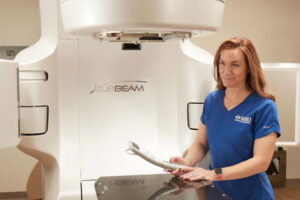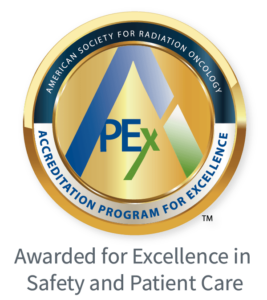Advanced Radiation Therapy for Lung Cancer

At Minneapolis Radiation Oncology, we bring advanced radiation therapy close to home, with 11 locations across the Twin Cities, Brainerd Lakes Area, and Western Wisconsin. Count on the cancer specialists at MRO to be here for you, with care, precision, and compassion.
What is lung cancer?
Lung cancer occurs when abnormal cells grow out of control in one or both lungs – usually in the cells lining the air passages. It’s the second most common cancer in both men and women in the United States (not counting skin cancer), and by far the leading cause of cancer death in the US, accounting for about 1 in 5 of all cancer deaths.
In Minnesota, lung cancer is the second most common cancer diagnosis, with about 3900 new cases a year according to the Minnesota Department of Public Health. Incidence rates vary significantly by race, ethnicity, and geography.
The good news is that Minnesota is among the top-tier states in survival rates. The bad news is that Minnesota falls into the above-average tier for percent of patients receiving no treatment. Issues such as fatalism and stigma can prevent eligible patients from accessing treatment that may save or extend their lives.
“I have the privilege to work with a dedicated group of healthcare professionals helping patients and their families through one of the most difficult challenges of their lives.”
Michael Haley, MD
MRO | Methodist
There are two main types of lung cancer:
- Non-small cell lung cancer (NSCLC)
Non-small cell lung cancer is the most common type, comprising about 85% of lung cancer diagnoses. Most often, NSCLC develops slowly and causes few or no symptoms until it is far advanced. - Small cell lung cancer (SCLC)
About 10%-15% of lung cancers are SCLC. This type of lung cancer tends to be aggressive and spreads more rapidly.
“If you’ve been diagnosed with lung cancer, there’s support available to help you enjoy the best possible quality of life. Visit Coping with cancer in everyday life.”
– American Cancer Society
